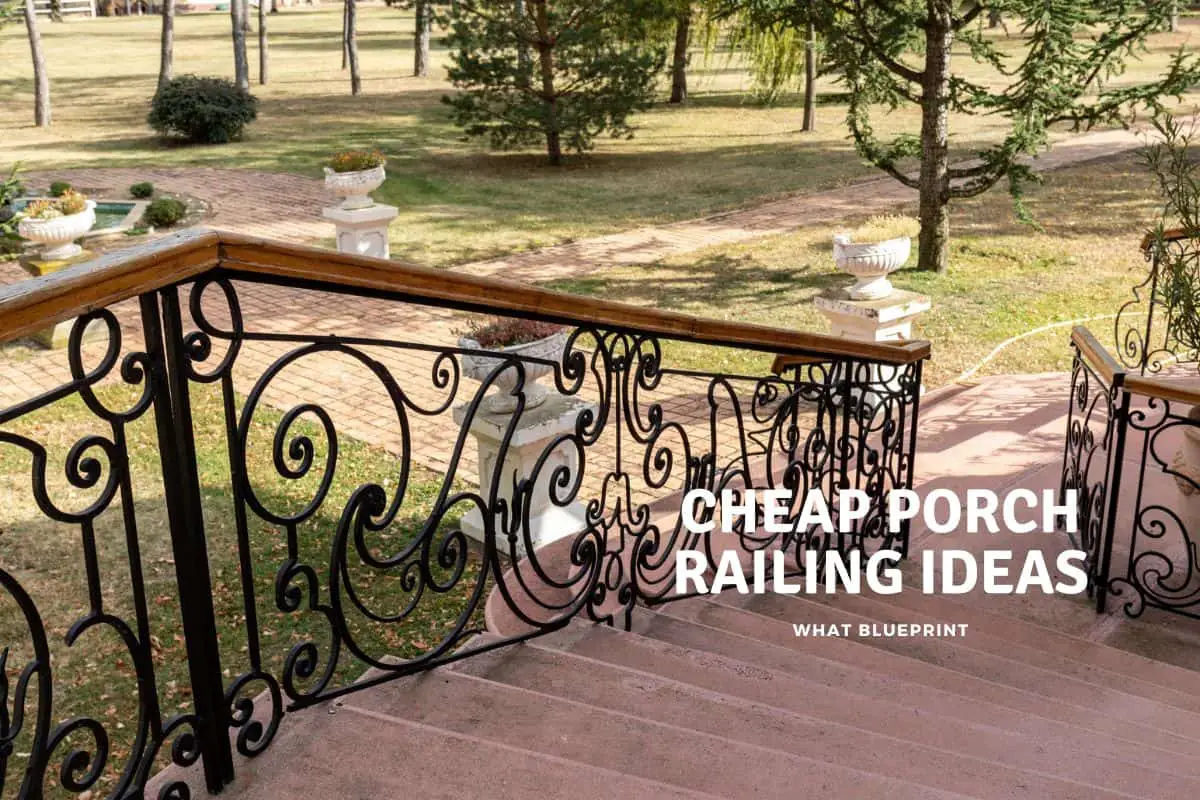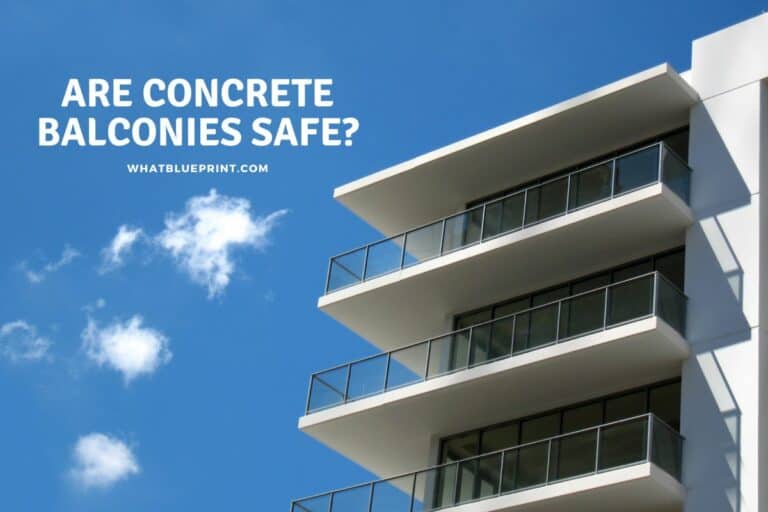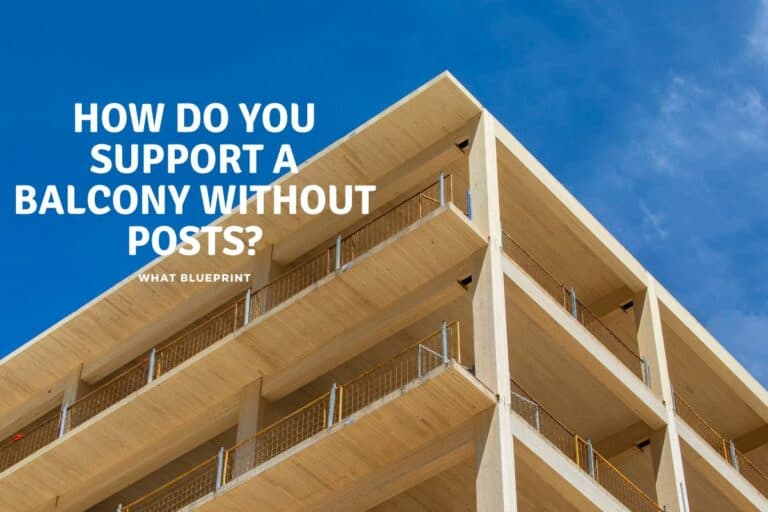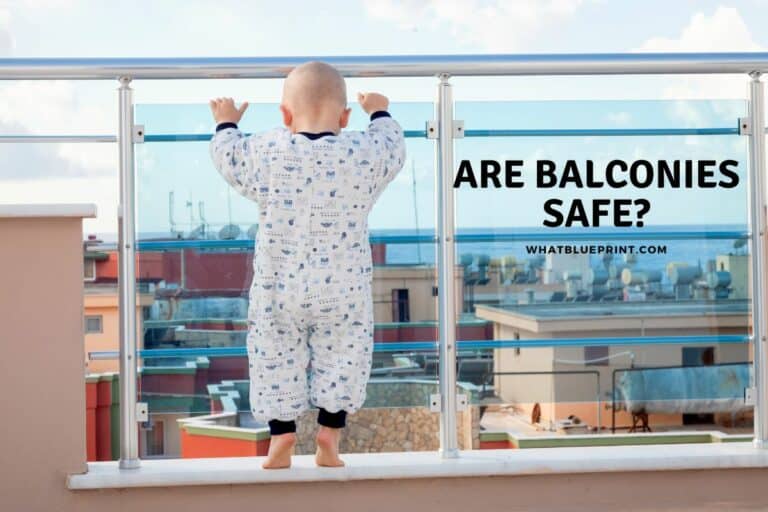Cheap Porch Railing Ideas
Porch railings provide a safety barrier around your porch to prevent accidents and injuries from people falling off the porch. In addition, your porch railing can significantly impact the value of your property and the atmosphere in your yard and tends to influence people’s first impression of your home.
Pressure-treated wood is the cheapest material for a basic railing. Vinyl gives you a low-cost and low-maintenance option. Depending on your requirements, some more expensive materials may be more inexpensive in the long run. However, with creativity, you can create more cheap porch railing ideas.
So whether you are constructing a new porch railing or remodeling an existing one, find the best materials to use and be inspired by out-of-the-box cheap porch railing ideas.
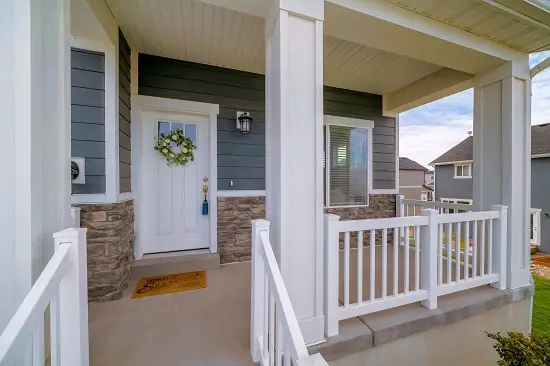
Best Porch Railing Materials
There are various excellent options available when it comes to materials that you can use for porch railings. However, we have found that the materials with the lowest upfront costs, most minor maintenance required, and best overall appeal includes:
| Material | Cost Per Linear Foot | Description |
| Wood | $20 – $50 | Wood is the most recommended material for outdoor conditions |
| Vinyl | $15 – $40 | Vinyl is an excellent alternative as it doesn’t require any maintenance |
| Composite | $10 – $40 | Composite railings are solid and steady and are available in a variety of styles |
| Aluminum | $30 – $70 | Aluminum is a lightweight, strong material that offers resistance against the elements |
| Stainless-Steel | $30 – $80 | Stainless-steel railings are low maintenance, offer resistance against the elements, has high tensile strength, and are very reliable |
| Wrought Iron | $50 – $120 | Wrought Iron railing is a solid, long-lasting material that is customizable and easily maintained |
1. Natural Wood Railing
Wood is a popular material for porch railings amongst homeowners in the US. Wood provides a stylish natural look and feels that people worldwide love. You can easily customize the textures and appearance of wood with paint, stain, dye, designs, or other methods. In addition, wood can be a very cost-effective material for porch railings. If you properly maintain wooden constructions, they can last over 50 years.
However, using wood is not very eco-friendly as it involves cutting down trees and treating the material with toxic chemicals. In addition, wood is not as durable as other materials and tends to damage when exposed to the elements for an extended period. And finally, it requires relatively high maintenance, which adds to your total project cost. However, it has one of the lowest upfront installation costs.
Pressure-treated wood is affordable, extremely versatile, easy and inexpensive to repair, and has excellent resistance against mold, rot, and weather conditions. However, the wood tends to splinter, split apart, and fade after being exposed to outdoor conditions for an extended period. In addition,
Using wood for porch railings will require much maintenance to keep its quality and strength.
Hardwood such as cedar and redwood has a more natural warmth, is less prone to warping, is more resistant to rot and insects, and requires less maintenance than other wood. However, hardwoods are more expensive than pressure-treated wood and tend to have a lifespan of only 20 years. Hardwoods do not require treatment and are naturally resistant to rot and insects damages when exposed to moisture for an extended period.
2. Alternative Vinyl Railing
Using vinyl material for your porch railings has excellent benefits, such as high durability, scratch resistance, and low maintenance, and you don’t have to worry about splinters. In addition, vinyl railings are smooth and do not require chemical treatment, making them ideal for houses with small children and pets. Finally, unlike wood which tends to be highly flammable, vinyl offers excellent fire resistance to protect your home.
Disadvantages of vinyl include fading and cracking if exposed to sunlight for an extended period, less durability, and being structurally weaker than other materials. In addition, vinyl products come in a minimal variety of colors, designs, and textures. Furthermore, you can not paint vinyl, meaning your initial color choice is permanent. Finally, many people feel that vinyl creates an unnatural atmosphere and doesn’t fit in most style homes.
3. Get The Best Of Both With Composite Railing
Composite materials are the cheapest porch railing material available and usually consist of wood and plastic. Composite materials are made from recycled materials, making the products eco-friendly. Because it contains wood, it can have a natural appearance and comes in a wide range of colors. In addition, it is very durable, and some manufacturers offer warranties of up to 25 years. Regular cleaning is the only requirement.
However, composite materials generally lack strength and require more support posts, and prolonged exposure to sunlight causes the material to soften, warp, and discolor. Furthermore, the materials offer minimal repair options, and you have to replace the entire section if it is damaged. Finally, the installation process is more demanding, and you must add upgraded features to customize the material, increasing the total cost.
4. Elegant Aluminum Railing
Aluminum is a lightweight and flexible material that offers resistance against rot, corrosion, and insects. In addition, it doesn’t require painting, staining, or other treatments. Furthermore, aluminum is recyclable, making it an eco-friendly option for homeowners. Finally, you can easily change its appearance, designs, and colors and integrate aluminum with other materials to create unique designs and constructions.
However, aluminum is relatively expensive compared to other materials and dramatically increases the project’s total cost. In addition, a disadvantage of aluminum is that it is not as scratch resistant as some materials. Finally, it is more likely that you will face a lawsuit from the homeowners association because of an aluminum railing, as they have filed lawsuits for reasons as insignificant as it being aesthetic un-appealing.
Nevertheless, aluminum constructions can last a lifetime with minimal upkeep and cleaning, they are strong if you are landscaping your front porch and the higher cost is worth considering all the material’s benefits.
5. Strong Stainless-Steel Railing
Stainless steel is a highly durable alternative capable of bearing heavy loads and offers resistance against scratching, denting, fire, and weather conditions, including prolonged exposure to sunlight. In addition, Stainless steel is recyclable, making it an ecofriendly option for homeowners. Furthermore, it has a simple cleaning process and requires virtually no future maintenance. Finally, you can paint the material for a different appearance.
Stainless steel is comparatively a more expensive option for porch railings and is more thus often used for industrial purposes and in corrosive environments such as by the coast. However, along with the price, the only downside to using the material tends to draw attention to dirty areas and streaks on the surface, requiring regular cleaning if you want to avoid it.
6. Intricate Wrought Iron Railing
Wrought iron is a rigid and malleable form of iron that has exceptional strength and durability. In addition, you can use it in conjunction with various other materials to complement their unique features. Furthermore, it provides an elegant style and is the best material for intricate designs. Therefore, installing wrought iron constructs increases your property’s value. Finally, it can withstand all weather conditions.
However, over a long period, they will start to rust, but fortunately, this is easy to resolve by regular maintenance and touch-ups. Furthermore, installing wrought iron railings tends to cause more accidents and injuries, and repairs and alterations on parts of the fence can be challenging. Finally, wrought iron material and products have a hefty price tag and require regular maintenance.
Although you might want to match or contrast your railings with your porch color, if you are not sure what color to use we have two articles below advising on what color to paint your porches.
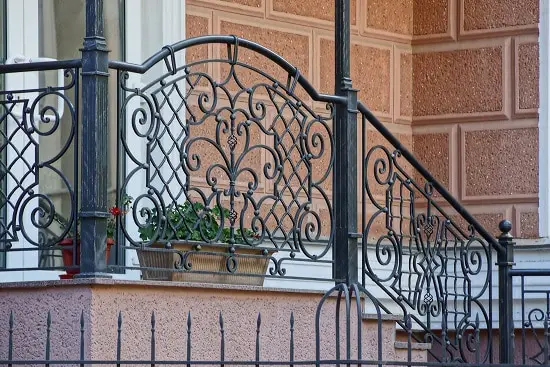
Factors To Consider When Looking For Porch Railing Ideas
When deciding on porch railing ideas, you should consider what the regulations require from your construction and which material can best meet your requirements. The material you choose for your porch railing determines the overall project cost, duration, and quality.
Building Regulations In Your Area
According to the International Building Code (IBC), developed by the International Code Council and used by most US cities, porches less than 30 inches above the ground do not require railings. However, if you include railings, it must comply with IBC strength and spacing requirements. Porches over 30 inches above ground level must have rails that abide by all IBC requirements.
Height: Residential Porch railings must be at least 36 inches above the porch level if measured from the porch’s surface to the top of the railing. However, Commercial railings are required to be at least 42 inches high.
Strength: Porch railing must withstand a uniform load of 50 pounds applied horizontally or vertically. In addition, it must support a concentrated load of 200 pounds applied to the railing panels and posts in any direction.
Spacing: You should not space railing posts more than 8 feet apart. In addition, the space between railings should be less than 4 inches preventing injury that might occur when falling through a wide opening.
Please Note. We strongly recommend that you enquire about the building regulations in your area before building a porch or porch railings. The regulations are continually changing and differ from state to state.
Durability Of The Materials
When looking for porch railing ideas, the material you choose should consider its tensile strength, life span, and resistance to rot, rust, corrosion, damage, and weather conditions.
Materials Maintenance Requirements
Maintenance of materials is essential to ensure that your porch railings remain strong and look brand new, and can continue to provide safety and security. However, some materials require more labor-intense and costly maintenance. Therefore, you should consider the maintenance requirements when selecting the material for your porch railing.
Aesthetic Appeal Of The Materials
The materials offer a variety of unique designs and appearances. In addition, some materials allow for a more comprehensive range of customization. The material should be able to provide the desired aesthetic appearance and create the ideal atmosphere.
Materials Cost-Effectiveness
You can determine the total project cost by combing the material prices, the cost to maintain the material, any additional requirements for the project, and the labor costs.
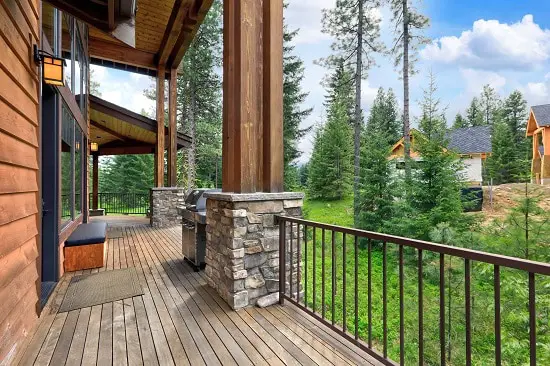
Convenience Of Working With The Materials
The convenience of working with the material can influence the project’s total time, total labor costs, and the amount of material required. Therefore, it can also play a role in the project’s outcome.
Creative Cheap Porch Railing Materials
| Material | Cost Per Linear Foot | Description |
| Branch | $0 – $100 | Branch railings can be very cost-effective and offer a great rustic and natural look |
| Rope | $15 – $45 | Rope railing adds a classic theme to your landscape and requires minimal labor to install |
| PVC Conduit | $25 – $70 | PVC Conduit is a lightweight, affordable, and easy to work with material |
1. Tree Branch Railing
You can construct a porch railing frame using your preferred materials for the top rails, posts, and bottom rails. Then, you can use tree branches as balusters for your railings. In addition, you can purchase these tree branch balusters in various colors, sizes, designs, and materials. However, you can construct your tree branch balusters from raw materials. Finally, you can even make use of thicker branches for your posts.
The best part of using this natural material is that you can freely find branches, twigs, and sticks everywhere. Therefore, you can significantly reduce your total expenses by using this recycled, eco-friendly material. In addition, you can treat the panels with any sealants or methods to preserve the material. Although this may not provide the same durability as other materials, you can quickly replace damaged pieces individually.
2. Nautical Rope Railing
You can use any material for your porch railings post and top rail. After which, you use rope as your railings balusters. You can use a variety of ropes for different designs, textures, thicknesses, and Strengths. In addition, it offers simple installation, as you can make a hole to run the rope through the posts or secure it to the post. Finally, it is a very inexpensive material you can quickly obtain, exchange, and repair.
3. PVC Conduit Railing
For your porch railing, you can use PVC conduit for balusters in conjunction with your preferred material for posts and the top rails. You can secure the conduit to the posts by using conduit clamps or by making a hole through the post for the conduit to pass through. PVC conduit is readily available and provides a cheap and easy installation process. However, the material is not very durable or UV resistant but easily painted or replaceable.
Conclusion
The Best or cheapest material for your porch railing depends on many more factors than the raw material cost.
Your requirements for the material, its intended purpose, your project’s details, and how you can use the material to comply with local regulations determine which material is best suited for your porch railing project.

